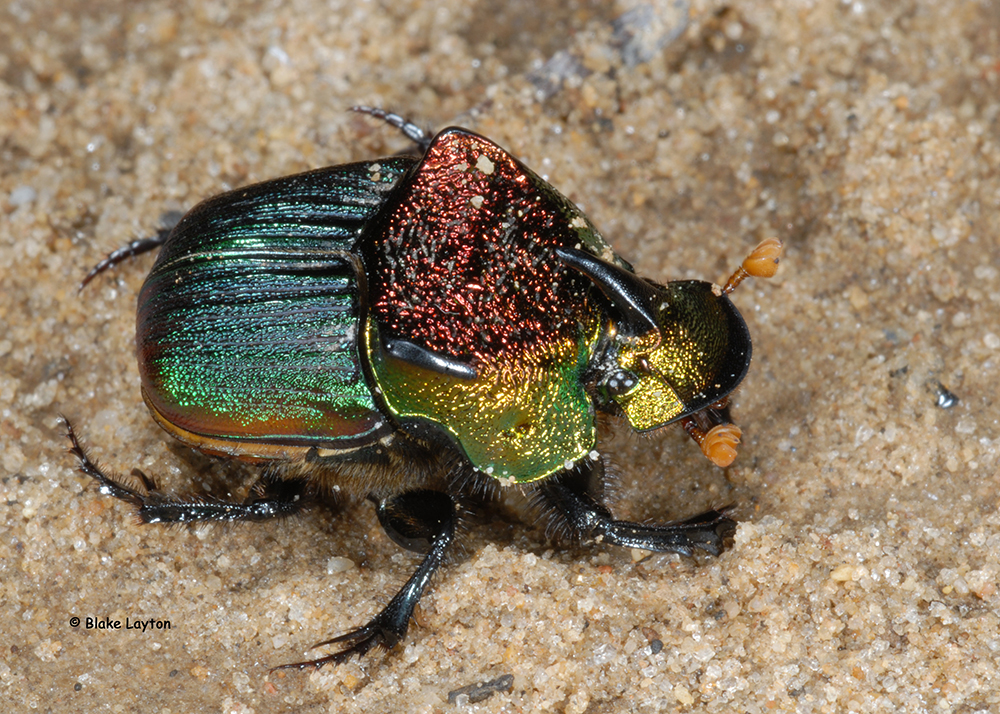Rainbow Scarab, Vol. 4, No. 7

Phanaeus vindex
Order: Coleoptera
Family: Scarabaeidae
These beetles are so pretty it’s hard to believe they are dung beetles. Despite their striking appearance, rainbow scarabs are rarely seen, even though they are fairly common. These are not the kind of dung beetles that roll balls of manure around on the surface of the ground. Instead, they dig holes several inches deep directly under the dung pile, place balls of dung in the holes and lay their eggs there. If you have ever noticed a dung pile with smaller piles of excavated soil around the edge, this may have been the work of rainbow scarabs. These beetles are strongly attracted to fresh dung of animals such as dogs, cattle, horses and hogs, and often appear within hours of deposition. Adults vary considerably in size, ranging from around ½ inch to one inch long. The beetle in this photo is a male; females do not have horns.
Like all dung beetles, rainbow scarabs are considered to be beneficial insects because they help break down manure patties, which interferes with development of horn flies and certain internal parasites of cattle and other livestock, helps recycle nutrients into the soil and frees up land surface area so new grass can grow. During the 1970s, more than a dozen species of dung beetles were intentionally, and successfully, introduced into Australia for this very reason. This was necessary after cattle were introduced because Australia does not have any native dung beetles that specialize in dung of non-marsupial mammals. Several species of dung beetles have been introduced into the US as well. Rainbow scarabs may look exotic, but they are a native species.
Blake Layton, Extension Entomology Specialist, Mississippi State University Extension Service.
The information given here is for educational purposes only. Always read and follow current label directions. Specific commercial products are mentioned as examples only and reference to specific products or trade names is made with the understanding that no discrimination is intended to other products that may also be suitable and appropriately labeled.
Sign up to receive Bug's Eye View

